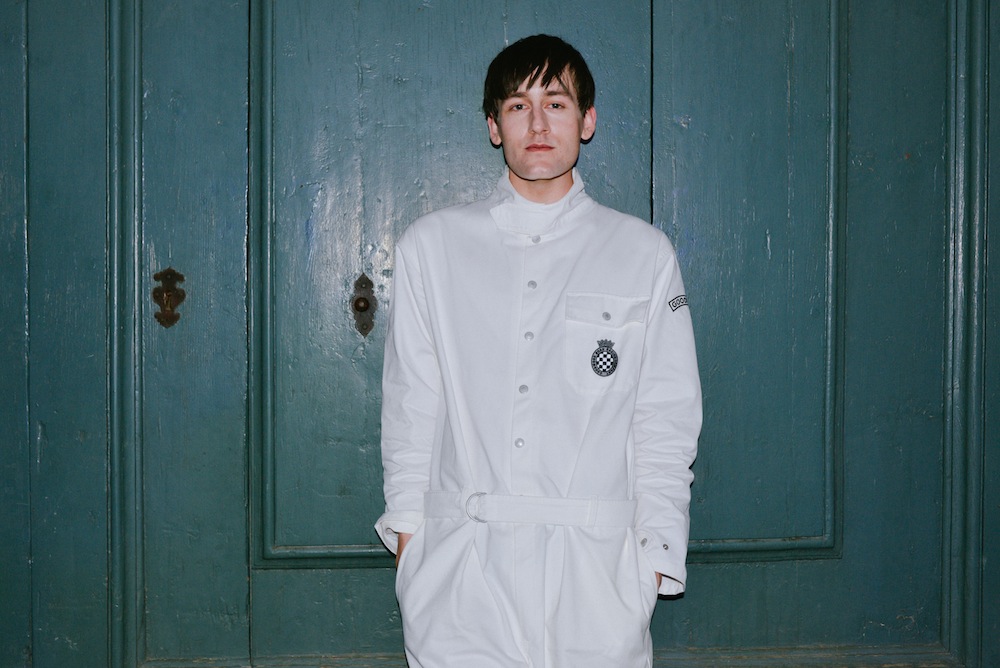Thomas Tait Reflects and Reimagines at Pitti Uomo
Last week in Florence, Italy, Pitti Uomo honored the Canadian-born, London-based LVMH-winner Thomas Tait as its official guest womenswear designer. For the occasion, Tait chose to rework seven market staples from his past collections. More art installation than fashion presentation, the new iterations were displayed alongside the old in mirrored boxes in the Boboli Gardens’ cavernous, 15th-century Lemon House. Some changes were striking—a cashmere and wool blend coat from Fall/Winter 2011 became a reversible, button-less virgin wool knit coat—others more subtle mutations. The experiment, Tait explains, is not about perfection; it is about creative and technical exploration, and how one affects the other. “Once you begin production and development, it becomes its own process that also has a creative influence,” says Tait. “Something isn’t possible; or you make a mistake but the mistake is interesting.”
EMMA BROWN: In the past, you’ve said that people read too much into the inspiration behind a collection. Why do you think the fashion world in particular is obsessed with that question of “what’s your inspiration?”
THOMAS TAIT: I think there’s an informality in fashion that you don’t find in art, where people are more inclined, or feel more freedom, to ask, “describe your work in three words,” which is a terrifying question and really inappropriate. In fine art, people are more apprehensive about asking those questions; people take it somewhat more seriously from a creative angle. With fashion, because of its speed, people need to get a quick sound bite and then finish. Everybody’s got a job to do. Usually people try to find one reason behind the collection or one inspiration and they run with it and that’s that, but it doesn’t really work that way.
BROWN: Does fashion need a context?
TAIT: It depends on the designer’s work. There are certain people where, regardless of the context or the year, you could take one garment out of a collection and it could stand alone. You can take Azzedine Alaïa and remove something from 20 years ago, and it would still stand up as completely relevant, especially in comparison to the body of work he’s presenting now. But there are brands or collections that really need to be put in context of the time—especially if you’re designing something that’s influenced by youth culture or your immediate surroundings. Then of course it has to have that context to survive. There are things that I’m really happy to have that are fun just in the moment, that I just did like [snaps fingers] and it felt spontaneous and exciting, and it reminds you of how you felt right at that minute. Then there are ideas that I want to see perform and continue over the years.
BROWN: For this installation, you revisited specific pieces from previous collections. Are these your ideal iterations of those original pieces?
TAIT: They’re evolutions of things—examples of trying to push innovation and construction. Some of them are taking the general consensus and pushing it in a completely different direction. Like the leather jacket, the common denominator is that they are both quite fitted leather jackets. Apart from that, they are very different entities. It’s not like one represents the better version of the other. It’s a continuation and an exploration of the same product in a different way. With the ribbed knit—the white one versus the yellow and transparent one—the yellow one was from last summer, which is what’s in stores now. That was something that technically I wanted to redo and naturally evolved into what’s hanging.
BROWN: Was it easy to pick the pieces you wanted to revisit?
TAIT: Yeah. There were certain things that you left after the show and were kind of gutted that you weren’t able to continue working on. That knit was an example of that. There are certain things where I felt like I had a responsibility to do it, like the coat at the end, because people know me for my outerwear and people reference coats when they talk about what I do. I also generally wanted to choose different product categories—I wanted to experiment a little with accessories. I could have done eight coats and called it a day, but I really wanted to explore in depth each product category.
FOR MORE ON THOMAS TAIT, VISIT THE DESIGNER’S WEBSITE.







